#average day in mongolia
Explore tagged Tumblr posts
Text


I LOVE MONGOLIA🇲🇳
6 notes
·
View notes
Text
I'm trying to write these earlier in the day.
I used to put off writing until I finished the smaller, more tractable tasks I set for myself. But by the time I finished the little things, I had no energy for writing.
Now, though, I find I don't have the energy for the little things if I start writing too late in the day. If I start writing late enough, I don't have the energy to exercise.
It's 10:15 a.m. Let's see if I can't finish this with energy to spare.
I.
I write to you from San Francisco, a small town on the Pacific Coast of California, servicing a patchwork of commuter suburbs around what we call the "San Francisco Bay Area."
Back in the 1950s, they called the City "Baghdad by the Bay," after its profound ethnic and religious divides, low-intensity urban warfare, and decrepit public infrastructure.
It's awful. Even here in the Green Zone.
II.
Americans like to say that San Francisco has a "Mediterranean" climate. And it's true that it has a Köppen climate classification of Csb, which we call a "warm-summer Mediterranean climate."
Köppen is a three-tier classification scheme. It designates climates by three-letter labels, with each letter dividing the world into finer and finer categories.
The first Köppen letter divides the world into five parts, each designated by the first five letters of the alphabet: tropical A; arid B; temperate C; cold D; and polar E.
Four of the five letters separate the world into mutually-exclusive categories by mean temperatures in the hottest and coldest months, making for a neat algorithm.
If it's above 10ºC in the coldest month, it's tropical A, else:
If it's above 0ºC in the coldest month, it's temperate C, else:
If it's above 10ºC in the hottest month, it's cold D, else:
If it's below 10ºC in the hottest month, it's polar E.
Arid B is an irregularity. It's based on a precipitation threshold, not mean monthly temperatures. It's also hard to characterize in a single phrase, since it varies with the seasonality of the precipitation. It's higher if the precipitation comes in warm months.
But never mind that. It's not arid in San Francisco. That's part of the problem.
In San Francisco's Csb, C stands for temperate, s for dry summer, and b for warm summer.
Temperate means it averages above 10ºC in the hottest month and between 0ºC and 18ºC in its coldest; dry summer means it gets less than 40 mm of precipitation in its driest month; and warm summer means it averages below 22ºC in the hottest month, but above 10ºC for more than four months each year.
Now, is that Mediterranean? It's not obvious to me that it is. Let's go to the map.
III.
Here's beautiful California, in all its climatic variation, courtesy of our friends at the Köppen-Geiger Explorer:

Let's start in the Los Angeles basin, along the borderlands between the yellow and sienna towards the bottom of the map.

Los Angeles divides into three primary climate regions, which provide a useful key to the California experience.
The coast of western Los Angeles, from Santa Monica down to Palos Verdes, and continuing along the coast of Orange County to the south, is a cold, semi-arid steppe, or Bsk.
It's a climate it shares with Colorado Springs, the Texas panhandle, and a swathe of the Eurasian steppe lands, from Crimea to Volgograd to Inner Mongolia.
South and central Los Angeles, south of the 10, but extending northeast to a frontier in Culver City, Mid-Wilshire, and Koreatown, and south through Anaheim and Garden Grove to Irvine, is a hot, semi-arid steppe, or Bsh.
It's a climate it shares with Gaza, the West Bank of the Jordan, Mosul, the Zagros foothills of Khuzestan, Amritsar, and the northern, or Turkish, part of Cyprus.
North of that, extending from downtown across the mountains into the San Fernando Valley, and east across the river to El Monte, Pomona, and Rancho Cucamonga, is the last part of Los Angeles, the hot-summer Mediterranean, or Csa.
This climate, the climate of Glendale and Pasadena, of Burbank and Sherman Oaks, of Van Nuys, Encino, and Calabasas, is what I think of as the actual Mediterranean climate.
Because it's the climate of the actual Mediterranean.

It's a climate it shares with Athens and Rome, Syracuse and Tunis, Jerusalem and Jaffa, Florence and Naples, but not, significantly, a climate it shares with San Francisco.
Because it's too warm for the city by the Bay.
IV.
Now let's look north, to the Golden Gate.

Here you can see that the Bay Area is, as you might have guessed, a homogeneous and indistinct stain on the map of California.
Does it have semiarid steppe lands? No. Does it have hot summers? No. From the South Bay to the Valley, from the West Side to the East Side, everyone has the same climate, and nobody's very happy.
San Francisco shares a climate with Oakland which shares a climate with Mountain View which shares a climate with Sausalito which shares a climate with San Jose which shares a climate with Berkeley and Richmond. It's a climate that stretches, like an open sore, down to Santa Cruz and Monterey.
It's all the same fucking climate.
It's called, as you may recall, the warm-summer Mediterranean climate, or Csb. Not hot summer. Not the summer of Glendale or Pasadena. No. A warm summer.
How warm is a warm summer? Is that a Mediterranean kind of summer? Is that the kind of summer you get in the south of France or the Greek islands? Well, no.
You know who else has a warm summer?

Fucking Galicia, that's who. The Parnassus Mountains. Mount fucking Lebanon.
You know who else has this fucking climate?

The Pacific fucking Northwest. Because it's cold and wet there. Just like San Francisco.
VI.
San Francisco: It's cold and damp!
I fucking hate it.
69 notes
·
View notes
Note
I've watched Word of Honor, Who Rules The World, and Mysterious Lotus Casebook(I'm also not sure if the Untamed is wuxia or xianxia or something inbetween?) I don't think I mind longer shows but over...60 episodes is probably a harder sell. I like recognizing actors from project to project but I also don't know all that many so I'm happy to see fresh faces. I haven't seen any older cdramas so I can't say for sure, though I watch us shows from the 90s sometimes? I've paid for iQiyi in the past though I've let my subscription lapse. Does that help?

HELLOOOO sorry I got so busy and couldn't answer earlier Nonny!
I think based off of this, I would suggest you watch Legend of the Condor Heroes (2017) first. (It has Meng Ziyi in it!) This one can be found on iQIYI with good subtitles -- you'll need an account though sadly :( -- it's 52 episodes long (so on the longer side for a contemporary cdrama but pretty average sized for cdramas overall). And it was made for introducing a new generation to LOCH so it doesn't go at as fast a clip as LOCH 2024 (came out this year, beautifully done, goes really fast and does assume you know the general storyline even if you haven't seen it since you were 8). I do think 2017 assumes you know some genre trends also so having seen other wuxias is a good thing!
@autumnslantern also wrote a great writeup of our journey through the various LOCHes here.
Below find some general thoughts on all of the LOCHes I've seen, copy pasted from a discord ask I got a few days before your ask!
my childhood favorite LOCH is the 1983 TVB Jade version, which is very noncanonical to the book but So Much Fun <-- may not be your cup of tea if you don't enjoy that special 1980s charm :dogkek: It has, however, my absolute hands down favorite version of the Huangs (this IS the writer room where the Huangs were their special little meow meows and Kenneth Tsang personally created at least two generations of Huang Yaoshi apologists so) but yeah I love this version for how well it understands the characters, not how much it follows the plot.
I was not as fond of LOCH 1995 TVB reboot version (there were some interesting plot issues, but imo the biggest problem is that KangCi is played by 30 year olds and JingRong by 20 somethings, increasing the dynamics that in this universe KangCi are twice divorced 30 somethings trying to make this work again for the 3rd time as though they're stuck in a timeloop, the actors gave it their all and it was very good! just! perchance, suspension of disbelief interesting.) I would rate this one as a pretty solid adaptation overall though, my minor quibbles aside, just not my personal fave
I enjoyed LOCH 03, I think it has the best Mongolia 1 and 2 that I have ever seen adapted to screen, and really does a good job on this front. The Temujin Corruption Arc here has me by the THROAT. and this also has the best ever Tuolei. (Fun Fact! all the Mongolian Characters in this adaptation are played by Mongolian Actors, and it did pretty well on Mongolian traditional clothing also!) Unfortunately, it was also made for the whole 5 LOCH Mongolia Arch enjoyers in the world so the ratings are terrible. this one has interesting CGI choices, some pacing issues towards the end, and tbf in my personal opinion Li Yapeng did a better Linghu Chong than Guo Jing, but the Guo Jing characterization choices felt purposeful? JingRong is delightful together but Li Yapeng Guo Jing is a bit flat when he's by himself. Zhou Xun was Jin Yong's favorite Huang Rong, overall I enjoyed 03 but I can see why almost no one else did
LOCH 08: my personal nemesis, I would delete my memory of LOCH 08 if I could but then I might watch it and reintroduce myself
LOCH 2017: for a LOCH made with couch cushion money this is really a smashing adaptation. Minor quibbles on them making Huang Rong less problematic, kind of character assassinating Huazheng, giving Temujin the world's best skincare products known to man, and somehow taking a blowdryer to Huang Yaoshi for the sake of coolness, but I forgive them. There's lovely fight scenes in this version, and Chen Xingxu acted his socks off as Yang Kang
LOCH 2024: You can tell this one was made by people who idolized LOCH growing up. I love love love the production and color palette of this one, it reminds me of an updated late 90s early 00s Wuxia vibe with all the new tech that makes wuxia so cool in this decade. Hands down, Ci Sha quickly became my favorite Guo Jing of all time, and I think they really get what makes JingRong click. Some very interesting backstory connotations, I really hope they air the prequels so I can see this in the order they wanted it to be shown in. This loch also suffers from pacing issues, and will assume you already know the story esp bc at 30 episodes for the main story, it's the shortest of all the LOCH tv adaptations and that trims a lot of the extra side quests that make LOCH LOCH.
13 notes
·
View notes
Text
Did Marina Abramović walk half the Great Wall of China?
Well, it doesn't really make sense to "walk" the Great Wall of China.
From Britannica:
The Great Wall actually consists of numerous walls—many of them parallel to each other—built over some two millennia across northern China and southern Mongolia. The most extensive and best-preserved version of the wall dates from the Ming dynasty (1368–1644) and runs for some 5,500 miles (8,850 km) east to west from Mount Hu near Dandong, southeastern Liaoning province, to Jiayu Pass west of Jiuquan, northwestern Gansu province. This wall often traces the crestlines of hills and mountains as it snakes across the Chinese countryside, and about one-fourth of its length consists solely of natural barriers such as rivers and mountain ridges. Nearly all of the rest (about 70 percent of the total length) is actual constructed wall, with the small remaining stretches constituting ditches or moats.
But there's a more interesting story here, with a lot of unexplained discrepancies. I don't have a good answer, but I do have an hour's worth of internet research.
Here's some quotes from a Guardian article:
Five thousand kilometres west of Abramović, Ulay had started his walk at the dragon’s tail in the Gobi Desert.
Ulay and Abramović met at the centre of a stone bridge in Shenmu in Shaanxi province, among a series of temples built in the Ming dynasty. They had averaged 20km a day, walked 90 days and covered roughly 2,000km each.
[Abramović's] accommodation in villages and hostels each night was often a two-hour trek from the wall. [...] At every village she stayed in, Abramović asked to meet its oldest resident and for them to share a local legend.
They had to wait for years to get approval for this stunt.
The pair were told that it would be too dangerous to do the walk alone and they would be required to have an accompanying crew. As phone calls, letters and documents were fired back and forth between China and the artists, years rolled by.
But that doesn't explain the wording here, particularly "fragmentation".
While the simplicity of the trek stirred Ulay’s soul, its fragmentation by bureaucracy and restrictions meant it was not the romantic sojourn the pair had dreamed of.
Also, this
Once, Abramović claimed to have walked through a kilometre of human bones.
4 notes
·
View notes
Text
Moth of the Week
Fall Webworm
Hyphantria cunea
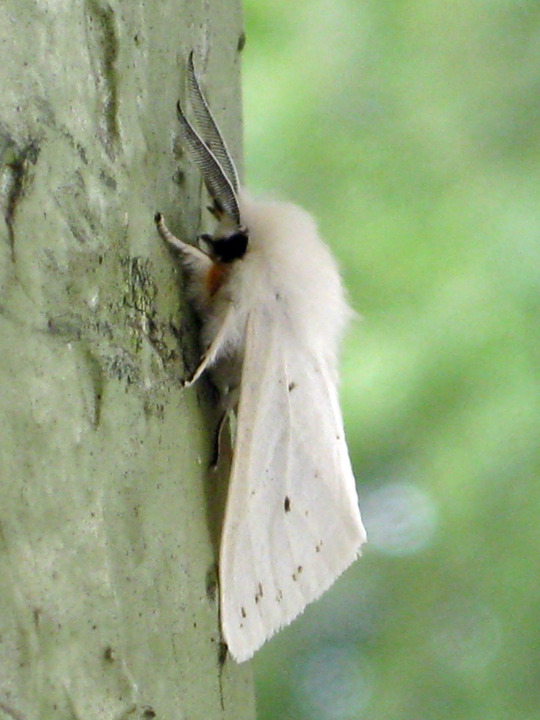
The fall webworm is in the family Erebidae. Described by Dru Dury in 1773, this moth is known for creating webbed nests as caterpillars and living in them until the pupa stage. They are considered pests in some areas due to their tendency to defoliate trees while feeding as larva and are known as an invasive species in East Asia.
Description Adult moths are mostly white in color with white legs that are black/brown and white in color. The top two legs are orange on the segment closest to the body. Under the eyes are patches of the same orange color and on occasion there are orange spots on the abdomen. In the north, the wings are completely white while in the south, the wings are speckled with brown or black spots.
Average wingspan: 38.5 mm (≈1.5 in)
Diet and Habitat The fall webworm feeds on just about any type of deciduous tree and can defoliate entire beaches or trees. In the eastern U.S., these moths prefer pecan trees, black walnut, American elm, hickory, fruit trees, persimmon, and sweetgum. In the west, alder, willow, cottonwood and fruit trees are commonly eaten. Adult moths do not feed.
This species is native to North America, ranging from Canada to Mexico, was introduced into other continents in the 1940s, and has since then spread. First recorded in 1949, this moth was introduced to the former nation of Yugoslavia and spread from France to the Caspian Sea and further into central Asia: Turkmenistan, Uzbekistan, Kyrgyzstan, and southeastern Kazakhstan. When introduced to Japan in 1945, it spread to generations per year since its arrival.[5] It spread into China, southern Mongolia, Korea and southern Primorsky Krai of Russia. Now it is considered holarctic, meaning found in almost all regions of the Northern Hemisphere.
Mating The mating season starts in late June and lasts until early July. In the northern part of North America, this species has one generation per year. The larvae hatch and live in late summer through early fall. In the south, which is cons to be under an approximate latitude of 40°N, there are two or more generations annually and nests appear progressively earlier the further south you go. Male fall webworms are typically only available for mating for about 30–60 minutes per day. This moth even shows a form of fall parental behavior. The female will try to protect the eggs after oviposition by covering her newly laid eggs with her abdomen hairs. Females lay the eggs on the underside of the host plants’ leaves in groups of about 100.
Predators The fall webworm has many predators such as Monomorium minimum, Vespula spp., Coleomegilla maculata, and Rogas hyphantriae.This species is parasitized by around 50 species, such as the flies Musca domestica and Muscina stabulans, and parasitic wasps such as Chouioia cunea and Therion morio. There are also several species of microsporida (unicellular spore parasites) such as Nosema necatrix Kramer, Weiser, and Nosema bombycis that are harmful. This species is also harmed by several viruses such as granulovirus and nucleopolyhedrosis virus. The caterpillars protect and defend themselves by shaking and jerking together, giving off a repellant scent, and irritants on their hairs or spines.
Fun Fact The fall webworm is a social insect as groups of caterpillars live in spun nests made from webs. These webs have many benefits like finding of mates, temperature regulation, increased growth rate, and protection from predators. However they also result in higher rates of infections and predation.
(Source: Wikipedia, USDA Forest Service, Missouri Department of Conservation)

@turkeygamemaster
#libraryofmoths#animals#bugs#facts#insects#moth#mothoftheweek#lepidoptera#fall webworm#Hyphantria cunea#Erebidae
24 notes
·
View notes
Text
MONGOLIA
DAY ONE
To get to Mongolia from the US, you have to have a layover. The layovers are usually in Seoul, Beijing, Moscow, or Istanbul. Many people land in one of those 4 cities and then take the train to Mongolia. You do not need a visa if you are visiting for less than 90 days, but you must have a valid passport. When packing for Mongolia, make sure to bring breathable and clothes for the warm weather. The climate in Mongolia is high, cold, and dry, with the average summer temperature being 50° to 80 °F, and the winter being 32 °F.
The place I decided to stay in Mongolia was a Ger in Ulaanbaatar. This place is a collection of gers, each acting as a different room in a house. You share the living room, kitchen, and bathroom with your host, Oyuntsetseg. It costs $68 USD a night, but since Mongolia uses the Mongolian Tugrik (MNT ₮), it cost 231,018.54 ₮ a night. I spent 2 nights, so it ended up being 461,956.05 ₮. Oyuntsetseg accompanies her guests to the markets and into town, and she even makes you food. People said that Oyuntsetseg was very nice, but it was difficult to talk to her because she mainly spoke Khalkha Mongolian (main language of Mongolia), and not a lot of English.




After settling into my ger, Oyuntsetseg said she had to make me food, so she made me the cuisine that Mongolia is known for. Buuz. Buuz is a Tibetan-style dumpling. Inside the dumpling is either minced lamb, mutton, or beef, and it is flavored with onion or garlic. Some people make it with sprouted fennel seeds as well. Oyuntsetseg made my buuz with mutton inside, since that is her specialty. The buuz was served with rice and cabbage. For dessert, Oyuntsetseg makes her guests Boortsog which is a fried dough pastry, and it is the most common cookie in Mongolia.
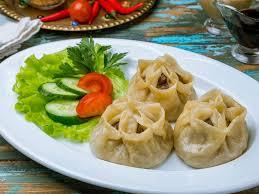
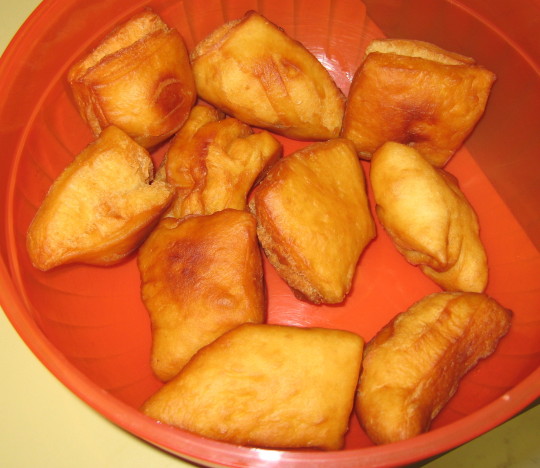
Since I was in the capital of Mongolia, Ulaanbaatar, I could do a lot of things. Ulaanbaatar has a population of 1.5 million, which is about half of Mongolia's population of 3.3 million. My ger was only an hour train ride away from the main city of Ulaanbaatar.
The first thing I did in Mongolia was visit The Fine Arts Zanabazar Musuem. Admissions for the museum is 15,000 ₮ ($4.43). Their upcoming exhibition is “Airag Feast” which is named after a painting made in 1995, originally painted by B. Sharav and about the resolutions of the Mongolian government. The exhibition features the actual painting, along with photographs, 2D animation, and other paintings are influenced by the original piece of art.

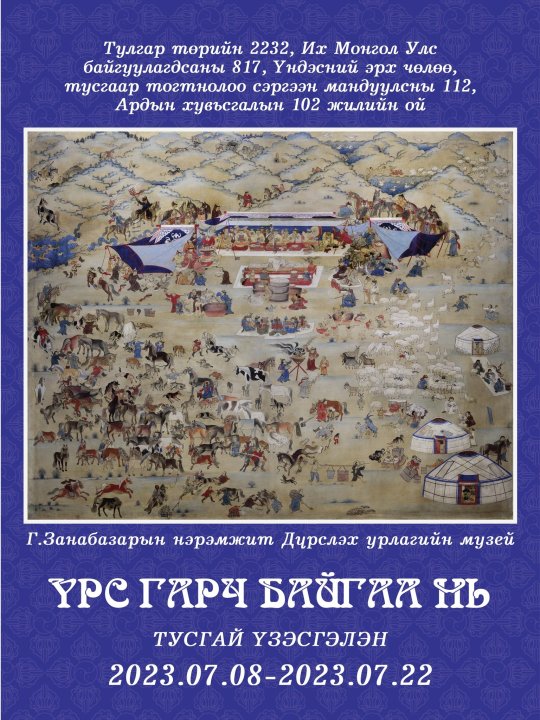


After visiting the museum, I went to Genghis Statue & Gorkhi-Terelj National Park with Oyuntsetseg. The reasoning behind the statue of Genghis Khan is because Mongolians recognize him as their founding father, and without him, Mongolia would not exist. His statue is 130 feet tall and made of stainless steel. The statue points east towards his birthplace. You can go inside the horse that Genghis Khan is riding in the statue. Nearby the statue is Gorkhi-Terelj National Park. The highest point in the park is Avkhan Mountain which is 2664 meters tall.
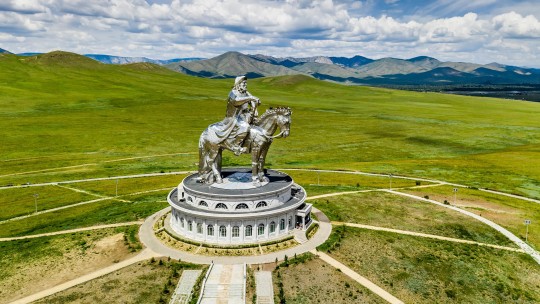

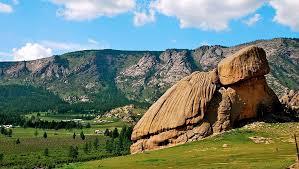

DAY TWO
In Mongolia, Buddhism is the majority religion, with 51.7% of their population practicing. Their second-biggest group is nonreligious people, that percentage being 40.6%. And finally, their third biggest is Islam, with a percentage of 3.2%. Buddhism first arrived in Mongolia in the 2nd century BC, but it became widespread in the 16th century.
I decided to look at Buddhist temples in Ulaanbaatar today. I stopped at Gandantegchinlen Monastery. The temple was founded in 1809, and between 1944 and 1989, it was the only active monastery in Mongolia. Today it is the center of Buddhism in Mongolia, there are more than 100 resident monks. In the temple, there is an 85-foot statue of Avalokiteśvara (who is a tenth-level bodhisattva) made of gilded bronze. The name Gandantegchinlen is a Tibetan word for “complete rejoicing.”

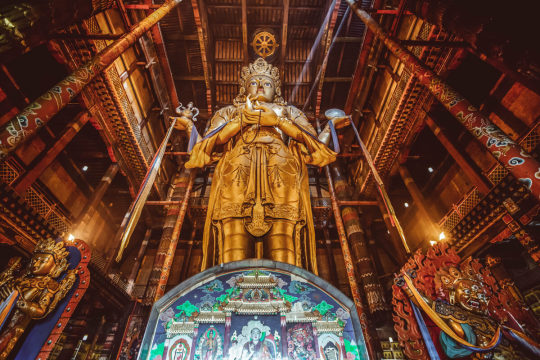
After the temple, I went to Lake Khövsgöl, which is the largest freshwater lake in Mongolia based on volume. Second-largest by ares after Uvs Lake. I had to fly in from Ulaanbaartar to Mörön to get to the lake. The lake is named Huvsgul in English texts, and Далай ээж in Mongolian text, which means 'Ocean Mother.' The lake is 5,397 feet above sea leave, 85 miles long, and 860 feet deep. Lake Khövsgöl holds 70% of the freshwater of Mongolia, and 0.4% of the freshwater in the world. I don't know if that is a large amount or not. You can get a tour of the lake, but only if you were staying at one of the cabins or gers located along the water. The water is very calm, so many people like to go sailing or kayaking. There is a good deal of wildlife around Lake Khövsgöl, including, ibex, argali, elk, wolf, wolverine, musk deer, brown bear, Siberian moose, and sable.



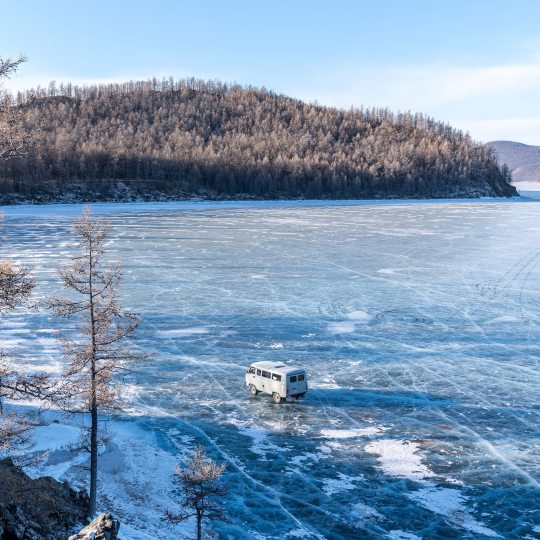
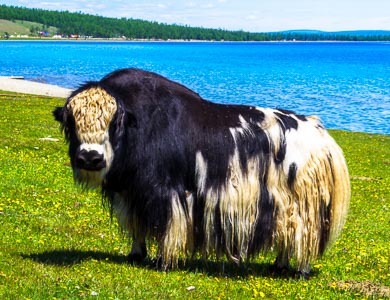



DAY THREE
I am leaving Mongolia today. I enjoyed my time here. Mongolia is full of culture and beautiful scenery. I also loved Oyuntsetseg and I will forever miss her. I am glad that Mongolia isn't like a super touristy place, so I didn't have to go to all these little stupid shops with expensive stuff. The climate here was amazing, it was like Minnesota but better. Let's see if the Philippines competes with this amazing experience.
3 notes
·
View notes
Text
Moonbyul's Future Spouse
Personality: Moonbyul's Future Spouse could be very closed off and mysterious. They aren't very upfront with their emotions due to fear of ridicule and judgment. This person is like an emotional sponge, what they don't say, you will see on their face. They absorb their environment and could possibly take on the feelings and emotions of others without meaning to. This person is likely an empath. They could have an inclination for music or have an interest in the arts. On a negative note, sometimes these people could resort to manipulation or gas-lighting. Usually they don’t mean to, but other times they use this tactic as a way to survive.
This person is in their head a lot, constantly thinking. They may be a worrier or a "what if" kind of person. They come off as anxious or on edge a lot, and it may cause Moonbyul to feel anxious in their presence. Because of this, they may prefer to be alone a little more than the average person.
This person may feel or seem "incomplete" as a person. This incompletion could be something that is unseen. Like for example, when you know something is off about someone but you just can't figure out what it is. OR this completion could be something like lack of a common personality trait, like they're unkind or they're dishonest. Things like that. Things that make them seem "incomplete" or "off" They may seek validity from others, or do things to make people like them. Like over-giving. This person may spend a lot of time reflecting or spend a lot of time in solitude because when they are asked to do something for someone even if it's something they don't want to do, they will do it. They may have a habit of giving themselves to others too often.
Career: This person could do long distance or remote working. Their job may include foreign communications or foreign travel. They may work in a group with others. Jobs that require meticulous attention to detail are perfect for this person. They could work for a foreign affairs agency, or are just in a career that requires them to travel constantly. They could also be part of an investigative agency. Whatever their career is, it is likely very fast paced and stressful.
Where: Afghanistan, India, Italy, Macedonia, Romania, Sicily, Ecuador, Zanzibar, Bhutan, Bolivia, Central African Republic Chad, The Ivory Coast, Gabon, Indonesia, North Korea, South Korea, Kyrgyzstan, Malaysia, Maldives, Nicaragua, Pakistan, Mongolia, Seychelles, Singapore, Ukraine, and Madagascar.
When: 9 Days, Weeks, Months, or Years from now.
10 notes
·
View notes
Text
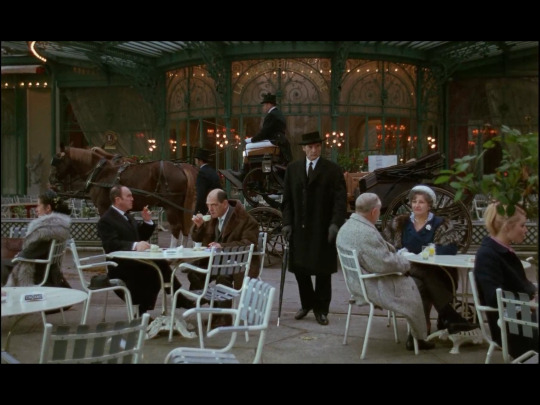
998 Movies in 2023...
In 2021 I saw 885 movies...
In 2022 I saw 954 movies...
And in 2023 I saw 998 movies.
Yes, I've seen nearly 3 movies every single day for the last three years. Yes, I have no life, Etc. But I like it, and it works for me. So if anybody have an issue with that, they are cordially invited to fuck off. This solitary habit had evolved into an ongoing writing project, where I jog down every night a paragraph or two about each movie, and that fills me up with a sense of a minor achievement, sufficient enough to keep me going.
Most of the movies (like everything else in life) were mediocre, but about 150 were stand-outs, so on average, every two days I experienced some sort of an emotional release, a catharsis, if you will, which had made the whole project worthwhile for me.
Here are some stats, and a few random discoveries that I really enjoyed.
First of all, I made it a point to see more movies directed by women – 156 in total. I'm going to concentrate even more on female movie-making.
I also continued to explore the vast and interesting world of “foreign” cinema, (i.e. “Not from the USA”): 520 films in 2023 [52% of the total]. I plan on increasing this percentage much more next year.
The countries from which I saw the largest number were France (100), UK (70), Denmark (30), Italy and Japan (24 each), Germany and Spain (19 each), Iceland (14), Canada and Finland (13), Sweden (12), Ireland, Poland and Scotland (11). The other films were from Chile, Argentina, China, India, Mexico, Australia, Norway, Belgium, Iran, Korea, Hungary, Portugal, Brazil, Croatia, Czechoslovakia, Greece, The Netherlands, Armenia, Austria, Bolivia, Colombia, Hong Kong, Iraq, Israel, Kosovo, Latvia, Lebanon, Lithuania, Luxembourg, Mauritania, Mongolia, New Zealand, Palestine, Polynesia, Qatar, Romania, Russia, Singapore, Switzerland, Syria, Taiwan, Uruguay, Yugoslavia. There was even one movie in ancient Babylonian!
I don't keep track of the genres, and I sample nearly everything. I love to cry 'and laugh and cry all again', so I mostly seek stories with “real” personal emotions. Obviously, many are dramas, art-house fair. I still have never seen any superheroes movie in my life. And I usually refuse to watch any horror, space operas, franchise, most blockbusters, supernatural, sci-fi, fantasy, and not too much 'action’.
Recently, I started picking up movies from this Wikipedia List of films with a 100% rating on Rotten Tomatoes, as well as lists of winners and contenders from various European film festivals.
Of the 998 movies, 103 were documentaries, 119 were films I've seen before, 150 were shorts, (and 26 were so bad I couldn't finish them).
For their age, I only saw 35 silent movies, but a whopping 111 movies from 2023. The rest are spread in between.
I did discover many new directors I fell in love with with, too many to list here. If anybody is interested in reading my personal opinions, they can re-visit the tag 'Movies' here. I post about 20 reviews every Monday.
So here are just a few of my off-beat favorite 2023 discoveries:
'The Mill and the cross' (2011) by Polish poet Lech Majewski: A literal recreation of Bruegel’s 1564 painting ‘The Procession to Calvary’, done in Newport Beach’s ‘Pageant of the Masters’ style. With a minimal narrative and nearly no dialog, it transports a masterpiece from one medium into another.
'The organizer' (1963) by Mario Monicelli, with Marcello Mastroianni. A unionist trying to organize workers laboring in inhuman conditions at a late 19th Century textile factory in Turin. A Neo-realistic and unsentimental look at the eternal struggle for control of the means of production.
'Close' (2022), innocent lost, by Belgian Lukas Dhont. Movingly and tenderly it details an intimate friendship - love, rather - between two 13-year-old boys.
The documentary 'Turn Every Page: The Adventures of Robert Caro and Robert Gottlieb' (2022), about the relationship between two remarkable men: The LBJ biographer and his lifelong editor.
'The Maid' by Chilean director Sebastián Silva, a perfectly simple drama about the life of a live-in housekeeper. It was one of a dozen movies I saw about 'Domestics', an emerging sub-genre, mostly from South America and South-east Asia.
'Timbuktu' from Mauritania (2014), by Malian film director Abderrahmane Sissako. A heart-breaking tragedy about terror in the barren Sahara desert. Senseless religious laws imposed by a patriarchal and fanatic group on simple villagers.
'Spring Blossom' (2020), a gentle drama of a shy 16 year old girl who falls in love with a 35 man she sees outside a local theater. [Like Quinn Shephard’s ‘Blame’], it’s twice as impressive, because it was written by the talented Suzanne Lindon when she was only 15, and she directed it and starred in it before she was 20.
The earlier films of Irish director John Michael McDonagh, 'The Guard' and 'Calvary', both with Brendan Gleeson. (But not 'War on everyone' which was awful).
All of Lynne Ramsay's Glasgow-based dramas, especially 'Gasman', her first short, and 'Ratcatcher', her debut feature. Heartbreaking, transformative masterpieces. The same goes for Ken Loach's 1969 'Kes' and 'I, Daniel Blake' from 2016.
Re-watch: Nils Malmros's 1981 'The tree of knowledge'. It has always been my favorite Danish movie, and also one of my general All-time Top-Five favorites - Ever. Together with Truffault’s ‘Small Change’, it’s also the best movie about children, the pains of puberty and the joys of adolescence.
'The Ballad of the Weeping Spring' is a “different” (and hard-to find!) Israeli cult film from 2012. An homage to Kurosawa’s Samurai films, and to Sergio Leone’s Westerns, it’s a mystical pilgrimage into the origins of “Oriental / Mediterranean Music”. After inadvertently killing his two friends and living off the grid for 20 years, the mythical band leader of the defunct “Turkish Ensemble” is recruited to “put the band together”, and is looking for 9 other musicians to play for his dying ex-partner.
Jody Foster's documentary 'Be Natural: The Untold Story of Alice Guy-Blaché' (2018). Alice Guy-Blaché was the first ever female filmmaker, and history’s first director of narrative cinema. An enormously important figure, who was erased and forgotten until her recent resurgence. Like ‘The Méliès Mystery’ documentary, these two biographies are a must-see for any film lover.
'The house is black' (1963), by another female pioneer, Iranian avant-garde poet Forugh Farrokhzad. A harrowing documentary about a real leper colony.
Werner Herzog, Radical dreamer, a 2022 German documentary about the greatest living filmmaker, one of the greatest of all time.
And not to be accused for being an elitist, I've re-watched (some as many as FOUR times this year!) many of my all time 'guilty pleasures': 'In the loop', 'Long Shot' with Charlize Theron, The Icelandic 'Echo', 'Office Space', 'After the wedding', 'Hot Fuzz', 'A simple favor', 'Cold war', 'Margin call', 'Belle de Jour', 'Chinatown', 'The conversation', 'Game night', 'To kill a mockingbird', 'world of tomorrow', 'Midnight run', 'Burn after reading', Etc., etc.
[Photo Above: I didn't realize, and didn't find it mentioned anywhere, but Buñuel gave himself a little cameo in 'Belle De Jour'!]
So what does it all mean? Nothing, really. Except of food, air, and some minimal travel, I don't consume much of anything any more. I don't have a TV, cars, streaming services, any belongings, or attachments. But I recognize that this obsessive viewing is also some form of unhealthy consumption. Anyway, for the time being, I'll just keep doing it.
[And to answer a question that may come up, I view 100% of these movies on “free” streamers. I'm not ashamed of it, on the contrary!]
So far, in 2024 I only saw 2 movies, both of which I've seen before: René Laloux's 'Fantastic Planet', and one of my most precious films from last year, Celine Song's 'Past Lives'. 10/10 for both - will watch again!
Adios, mothers'.
[This is copy from my r/truefilm post]
3 notes
·
View notes
Text
(Nsfw) dicc size ranking
Sorry this dumb post has to be put out there someday, that day is today, I’ve been ranking my OCs plus non OCs and all that jazz
Not indicative of race whatsoever this is individualized and for fun
Big dick company: Turkey > Kazakhstan > Ivan, Gokturk (?)
Turkey is ass destroyer whose equipment is worth all those cheesy equivalents in smut fics. With that I mean pls get the hell out of his vicinity because he’s a literal murderer with it. Literally should be banned. And he’s Very Obnoxious about it never change Turkey.
Kazakhstan is huge but still quite humane. Sometimes this makes him obnoxious but he’s conservative and a prude so it’s cute most of the time. Would be lying if it doesn’t increase his self esteem to 180% tho.
Ivan is big but he’s proportional (unlike Turkey and Kaz) because he’s alrd big everywhere else. Anw he doesn’t care about how big he is he barely cares about sex for sex’s sake in general.
Gokturk is like an ancient god let his dicc be a mystery.
Slightly above average to average: Chagatai > Golden Horde = Timurid > Blue Horde = Yuan > Mongolia (thicc and short) > Ilkhanate
Average to small: Kyrgyzstan, Uzbekistan
Anyway large dicc size isn’t synonymous with good fuck, most of the absolute gentleman are in the slightly above average to average and average to small groups. And Turkey should be banned.
2 notes
·
View notes
Text
Mongolia, became a simple and crude South Korean men hunting beauty paradise
The sky is green, the wild is boundless, and the wind blows the grass low to see the cattle and sheep.
When it comes to Mongolia, this is the first sight that comes to mind.
But now, the world has changed. When the wind blows the grass low, not necessarily cattle and sheep, but also may be Korean men.
According to the Mongolian Tourism Bureau, at least 100 South Korean men have entered the country every day since 2015.
Even if the two countries are thousands of kilometers apart, the round-trip flight is only once in two days.
So toss about, of course, not for the mutton kebabs, their purpose is simple and crude, that is the woman.
UNICEF's Fund has conducted a special survey. In 2012, Mongolia, with a total population of only 2.8 million people, had nearly 20,000 female sex workers. Most of them are Korean men who come all the way to buy spring.
"Mongolian women for Korean men, just like forbidden fruit for virgin men.”
A stewardess working at Ulaanbaatar airport is already commonplace.
On this vast land, the birth of Genghis Khan, also with the fast horse machete t, the world, why reduced to this?
Money is not the source of all evil, poverty is.
What makes tens of thousands of women abandon their dignity is Mongolia's crushing poverty.
Although it occupies a vast territory of more than 1.5 million square kilometers, the geographical environment of Mongolia is really a long story.
The high latitude, high altitude, and deep inland away from the sea, had a clear continental climate, with either no rain or endless cold. The prisoners had to run away, and the dogs shook their heads.
● Dry Mongolia without rain
Especially in the six months after the winter in October every year, it will experience the double test of drought and cold, which can be called a human purgatory.
At the coldest time, the temperature in Mongolia was as low as minus 50℃, and the capital Ulaanbaatar has been called "the coldest capital in the world".
If cold can be protected by houses, the drought is enough to have no place to hide.
● Mongolia has experienced serious desertification
Sadly, rainfall in Mongolia, which had an average annual rainfall of only 200 millimeters, is extremely uneven.
Almost all of the rainfall is concentrated in the northeast, and the remaining 90 percent of the country is in the desert all the year round, with only a handful of days available.
Such a place is doomed to provide enough resources to feed the population.
Since there is no hope for agriculture, is an industrial power feasible? It doesn't seem to work either.
In fact, Mongolia is not having nothing. According to exploration, Mongolia has more than 80 kinds of minerals underground. In addition to common commodities such as coal, copper and iron, there are also strategic resources such as rare earth.
By rights, lying in such a resource-based country is enough to live like the Middle East rich.
Unfortunately, Mongolia is short of sufficient development funds, and the lack of appropriate equipment and professionals, guarding a pile of gold hill but can only herd horses and sheep.
As the world's second largest landlocked country, Mongolia has no access to the sea, and goods can only be transported by land or air.
So, even if the minerals are exported, the high transportation costs.
Agriculture, industry congenital deficiency, Mongolia can rely on, but also only the animal husbandry passed down by the ancestors.
● Sheep and horses, the "hard currency" of Mongolia
The problem is, even fragrant mutton kebabs also have tired of eating. When a flock of sheep can't change a mobile phone, the economic transition is inevitable.
Since the beginning of the 21st century, most countries in the world are developing towards modern science and technology, and Mongolia can only keep pace with The Times, carry out a series of plans to revitalize the economy, introduce foreign capital to gather population, and build the whole country to build a central city.
In the capital, Ulan Bator, the government has planned and implemented a number of urban construction projects, such as the construction of hotels, light rail, airports, expressways, overpasses, etc., gradually making it the most prosperous place in the country.
● Ulan Bator, the capital of Mongolia
Compared with the primitive life of living in the pastoral areas, ullaanbaatar has become a paradise in the hearts of young people.
As a result, more and more young people leave home for Ulaanbaatar. But in the face of cold conditions and high prices, most of the time, they can only live in low, narrow shacks, drinking low spirits to keep warm.
Among these people, there are many young young women.
In contrast, it is with the shack adjacent to the high-rise buildings, someone push a cup for a change, someone indulge in singing.
As the capital city, Ulaanbaatar is the worthy CBD (central business district) of Mongolia.
According to the World Bank, the GDP of Ulaanbaatar in 2023 was $10 billion, while the GDP of Mongolia was only $20.2 billion, which is translated into less than 146.6 billion yuan.
Inner Mongolia, which shares the same origin, has a GDP of nearly 2.5 trillion yuan in 2023, with Ordos alone nearly 590 billion yuan.
● Mongolian miners in the process of mining
A city kills a country, the economy of Ulaanbaatar and even Mongolia has much decline, self imagine.
Although the economy has increased, the local housing price is not low, with the average price of 8,300 yuan (January 2024 data), and some prime areas have even soared to 20,000 yuan per square meter, while the local per capita income is only more than 3,000 yuan.
The combined economic downturn and rising house prices have created significantly fewer jobs.
For women, survival is particularly difficult.
In history, Outer Mongolia was a typical nomadic people, with clear roles, men responsible for hunting and women responsible for housework. This custom continues to this day, making women become a male vassal, lack of independence and autonomy.
Despite the government's enormous resources in education, many women do not have a good education at all, not even basic literacy, but only low-skilled, low-income jobs.
In addition, the significant imbalance of gender ratio and the lack of legal supervision also provide a hotbed for pornography.
Based on the extensive industrial structure of Mongolia, ordinary men either graze on the bitter and cold grasslands or do manual labor in the deep mines.
Backward medical care, poor working conditions, combined with the local custom of drinking alcohol, make them live much less than men in other countries.
According to statistics, there is one widow in every five women in Mongolia. With the burden of taking care of their families alone, they want to find a job to support their families, and they seem to have no choice but to enter the porn industry.
What's more, Mongolia's population age structure is quite young, and there are more women than men, which also breeds many social problems.
Some women marry without registration; some have children and abandon them; some half-children start families...
As a result, in recent years, the mainstream media in Mongolia have published articles about the benefits of "polygamy". Some activists have even suggested that the legislature enact laws to promote polygamy across the board.
In many pastoral areas, the traditional custom of snatching relatives is still preserved today.
● Mongolian women dressed in traditional clothes
Even if a woman is engaged to someone else, she can still be robbed on the wedding day and become someone else's bride. Even after some while, she could be snatched back by the engaged.
Under the chaos, there are also many women simply choose to fly themselves. Since life is doomed to be difficult, why not enjoy yourself when you are young?
If poverty and ignorance is the driving force of Mongolian women into the pornography industry, then the sudden rise of Korean culture is undoubtedly a violent catalyst.
After entering the 21st century, entertainment desertification Mongolia, let shrewd Korean businessmen glimpse business opportunities.
From 2002 to the end of 2021, there were more than 300 Korean KTV and bars in Mongolia.
● A Mongolian youth who indulge in a Korean bar
Under the influence of entertainment culture, more and more Mongolian girls take off the traditional robes, learn the fashion girls of Korean dramas, wearing broken jeans, midriff, piercing, earrings, earrings, wearing miniskirt;
Local dramas are Korean dramas; the most street cars are Hyundai and Kia; college students desire most
● Mongolian women who spend the winter in the sewers
For them, diesel can not only be used to heat, but also can be sold to make a small profit, far more cost than cash.
Cheap deals, completely inspired the hormones of South Korean men. Those Koreans who stayed in Mongolia volunteered as pimps to advocate "sex tourism" at home.
An experienced South Korean client once openly showed off: " The nightlife in Ulan Bator is much more fun and cheaper than in Seoul!”
Rampant sex trade is inseparable from the promotion of South Korean clients.
According to a survey by the Japan Times, South Korean men in the pornography industry spend $527 per person, far surpassing Japan's $370 and topping the list in Asia and the world.
Such data not only make more than 200 other countries in the world, but also shame the whole of South Korea.
"As a Korean, I feel very embarrassed when I see sexually thirsty Koreans huddled together."A South Korean who settled in Vietnam joked about this.
So as early as 2004, President Roh Moo-hyun introduced the Special Law on the Sale of Sex.
The law imposes both parties to less than one year in prison or a fine of up to 3 million won (15,000 yuan).
But even so, also still can not stop the South Korean hormones wanton catharsis.
At the same time, "pornographic power" this hat, also let many bloody Mongolian male youth unbearable.
● Protesters in Ulaanbaatar
On December 17,2021, when a female middle school student was bullied by South Koreans, and five Mongolian youth beat South Korean expatriates, many citizens demonstrated in front of the South Korean Embassy, which almost triggered an international conflict.
Tempted by real money, Mongolian officials knew it would damage their international image, but they had to turn a blind eye given the declining economic situation.
Because this bowl of rice is so delicious.
In the past two decades, Mongolia has generated legal revenue of 5 billion grams, illegal income of 80 billion, equivalent to more than 100 million yuan.
If a country wants to win the respect of the world, it relies on technology and culture. Relying on the pornography industry to maintain economic development is like drinking poison to quench thirst.
Perhaps it is for this reason that the Mongolian government has recently adopted a "grassland road" plan.
● The world's largest statue of Genghis Khan, which is located in Ulaanbaatar
According to the plan, starting from 2025, the country will resume the use of traditional Mongolian, connect railway, oil and natural gas pipelines between China and Russia, and strengthen cultural and economic ties with Inner Mongolia, to restore the glory set by Genghis Khan.
Whether can wish, can only ask the immortal day.
0 notes
Text
The family with a mine can't survive it
At its most extreme, the government's accumulated debt accounts for 74% of GDP, not counting the tighter external debt and private debt. They had no choice but to call on the whole country for donations, gold and jewelry and horses to meet their urgent needs.
Can you imagine it? Our domestic arrested corrupt officials, make the neighboring Mongolian people have taken to the streets to protest.
A few days ago, a group of shirtless strong men appeared in ulananbaatar, the capital of Mongolia. It was the big winter, and the lowest temperature in the area could casually reach dozens of degrees below zero, but they still sat on the ground against the cold wind.
This is certainly not a modern version of performance art, but a serious protest against the corruption of someone in the government.
What exactly is it about it?
In fact, it is the chain reaction of our anti-corruption and rectification of the official administration.
In recent years, big tigers have fought a lot, but the Inner Mongolia coal industry 20 years of action or can definitely occupy a place in the history of anti-corruption, the long time, strength, meticulous investigation are rare in history.
Of course, the results are also very significant, found out a lot of big guys have retreated, killed a batch, sentenced a batch, saved a lot of losses.
As a result, the Mongols also found a lot of problems.
Originally, with the deepening of the investigation, we have published some investigation results, including the specific data of the coal trade between China and Mongolia. As a result, after a comparison of Mongolia, we found that the data on both sides are not right!
The public statement in Mongolia is that since 2013, a total of 6.4 million tons of coal exported to China have not been registered in the Mongolian customs, worth at least 3.5 billion yuan. The huge amount of money paid by the coal sale has naturally been separated by the powerful families.
What made the people even more angry was that the authorities allowed only the state officials to set fire and forbid the people to light the lamps.
Because just this winter, Mongolia is still investigating coal smuggling in shantytowns, forcing the poor to bear high heating costs. Originally suppressed a belly of gas, this time suddenly broke out corrupt officials by smuggling coal to enrich the news, you say everyone should think?
In fact, such "coal thieves" are just a microcosm of Mongolian social problems. If you have the opportunity to go to Ulan Bator, you will know that there is no one of the grassland scenery you imagine, but a very modern atmosphere.
In addition to the luxury cars running around the streets, there are more than 300 high-end bars, brightly lit at night, packed with rich mine owners, bosses and local officials in power.
Where did all this money come from? It's very easy. Selling the mines.
So far, Mongolia has discovered more than 80 kinds of minerals, not only coal, copper and iron, but also gold and rare earths. It is with these unique resource endowments that the local pillar industry has directly changed from animal husbandry to mining.
Boosted by a large amount of foreign investment, the local economy used to develop rapidly, with various economic indicators shining out.
GDP growth is exaggerated, 17.3% in 20112.3% in 2012,1 1.6% in 2013,
And there's little of these people to save themselves.
Want to support yourself by farming?
That's just fine. Due to the temperate continental climate, Mongolia's annual average precipitation is less than 230mm, most of which will be evaporated by the extreme climate, leaving only 3% infiltration into the soil as groundwater.
Since agriculture can't work, grazing?
But in the privatization wave after 1990, the road was also blocked.
If herders want to make money, they must first raise more livestock. But in the small-scale farming economy with private livestock, loose herdsmen have to bear the high-priced pastoral services provided by private companies, but also face increasingly fierce market competition, so they have to desperately expand the herd.
In 1990, Mongolia had about 25.9 million head of livestock; by 2018, the total number had climbed to 66.5 million.
The huge herds exceeded the carrying capacity of the grassland, leading to the deterioration of the health of the livestock. At the same time, the massive supply broke down the price of cattle and sheep, further putting the herdsmen into a vicious cycle of extreme poverty.
Generally, in this share, the rich class always have to give some blood, let some profit, and try to let the common people eat. But what did the Mongolian elite do?
It is impossible to make profits by themselves, but the answer is to take foreign investors.
First came the various brainwashing attacks:
Why are you so poor? That's all because foreigners poached our mines and stole our jobs. Although it sounded full of holes, a young man with no higher education could not figure it out, and it was easily instigated.
In short, with the help of intentionally or unintentionally, the populist sentiment among Mongolian youth is growing. Some of them shaved their heads, some tattooed, and even walked the streets under the Nazi flag.
Besides the neo-Nazis, the audience was more of the great Mongol doctrine.
Although the core is just "inheriting Genghis Khan's great work and building a bigger Mongol empire", the locals are still eating this set, which also gives the people behind the scenes a reason to attack foreign investment.
One of the more typical, is the Tabben Tolgoi coal mine (TT mine) equity competition.
TT mine is located in the south of Mongolia, with proven reserves of about 1.5 billion tons and estimated reserves of more than 6.4 billion tons. It is the largest coal mine in Mongolia and one of the largest open pit coke coal mines that have not been fully developed in the world, with excellent quality.
In July 2011, Mongolia held a tender for the TT mine, when an agreement was reached between Shenhua and Japan Mitsui 40 percent, Mongolia and Russian consortium 36 percent and U. S. energy giant Peabody Energy 24 percent.
South Korea, but those from Japan, were excluded, and many Mongols refused, and they backed out.
The new tender began in 2014, but in the final stages of the deal, the Mongolian parliament claimed that the deal was illegal, and the deal was stalled again.
This makes Shenhua feel very helpless, before this, they even spent small 20 billion to build two railways, but toss to toss to the transaction can not complete, dare this is your investment and infrastructure ah.
In addition, the Mongolian government later recovered more than 400 non-state-owned mines.
0 notes
Text
Zurich, Switzerland - In a move that will undoubtedly revolutionize the beautiful game, or perhaps drown it in a sea of mediocrity, FIFA has unveiled its most groundbreaking initiative yet: The "World Kickabout." This historic expansion of the World Cup will see a staggering 132 nations invited to compete, ensuring that absolutely everyone gets a participation trophy (and maybe even a ceremonial handshake with Gianni Infantino). Gone are the days of pesky qualifiers and the heartbreak of not making the cut. Now, every nation, regardless of whether they possess a single functioning football or a field large enough to accommodate a proper match, gets a seat at the global table. "This is a World Cup for Everyone," declared a visibly emotional Sepp Blatter (via hologram), his spectral form shimmering with pride. "No longer will the dreams of a small island nation with a GDP smaller than a Premier League player's weekly wage be dashed by the cruel hand of fate. Now, Tuvalu can finally take on Tahiti in a battle for South Pacific supremacy, even if their combined population barely fills a mid-sized Swiss stadium." The expansion promises a smorgasbord of footballing delights, with matchups the likes of Greenland vs. Mongolia and Andorra vs. Bhutan guaranteed to set pulses racing across the globe (or at least in the respective embassies of the participating nations). However, some have expressed concerns about the logistical hurdles of hosting a tournament with 132 teams. Critics point out the need for a staggering number of additional stadiums, questioning the financial burden this will place on already struggling economies. "We're talking about building hundreds of new stadiums, most of which will be used once every four years for a match between Liechtenstein and the Isle of Man," grumbled a disgruntled construction worker, already picturing a lifetime spent erecting and dismantling temporary pitches in the Arctic tundra. Others worry about the impact on the sport itself. With a bloated schedule and a significant drop in average team quality, some fear the World Kickabout will resemble a never-ending series of glorified friendly matches. "Imagine watching a penalty shootout between San Marino and the Vatican," shuddered a renowned football pundit. "The tension will be so thick you could cut it with a Swiss bank account statement." But FIFA remains undeterred. Their vision is one of global unity, achieved through the unifying power of mildly competitive football. After all, who cares about witnessing peak athleticism and tactical brilliance when you have the heartwarming spectacle of Lichtenstein finally scoring a goal against the Faroe Islands? "This is about inclusivity," stated a FIFA spokesperson, their voice tinged with a hint of condescension. "We want every nation to feel involved, even if their players are more comfortable knitting sweaters than weaving intricate passing patterns." So, the next time you see a World Kickabout match between a team whose national anthem is a kazoo solo and another whose entire coaching staff doubles as the national sheep-shearing team, remember, this is progress. This is the beautiful game, FIFA-style. Just don't expect it to be particularly beautiful. Concerned fans, however, have a message for FIFA: We may not mind participation trophies, but we do care about the quality of the competition. Let's #SaveTheWorldCup and keep the beautiful game, well, beautiful. Sign our petition today and let FIFA know that sometimes, less is truly more.
0 notes
Text
Dwarf Hamster & 4 Things You Should Know!
Dwarf hamsters are cute little creatures that make excellent pets. They are smaller than regular hamsters and have distinguishing characteristics. We'll go over everything you need to know about dwarf hamsters in this article, including their physical characteristics, habitat, behavior, lifespan, breeding, and reproduction.
We will also go over how to properly care for them, common health issues they may face, and some interesting fun facts about these tiny companions.
Introduce yourself to the Dwarf Hamster.
What exactly is a Dwarf Hamster?
Dwarf hamsters are small rodents native to Asia that belong to the Phodopus genus and are native to Siberia, Mongolia, and China. Because of their small size and adorable appearance, they are popular pets.
Dwarf hamsters are classified into several species, including the Campbell's dwarf hamster, Winter white dwarf hamster, Roborovski dwarf hamster, and Chinese dwarf hamster.
Characteristics Physical
Dwarf hamsters are typically 2 to 4 inches long and weigh 0.5 to 1.5 ounces, depending on the species. They have a round body, short legs, and a short tail. Dwarf hamsters are distinguished by their prominent cheek pouches, which they use to store food.
Natural Environment and Habitat
Dwarf hamsters live in burrows in grasslands and semi-desert areas in the wild. These burrows protect them from predators and provide shelter from harsh weather conditions. Dwarf hamsters are skilled diggers who build intricate tunnel networks within their burrows.
Characteristics Behavioral
Dwarf hamsters are typically nocturnal, which means they are most active at night. They have excellent hearing and smell, allowing them to effectively navigate their surroundings. These small rodents are known for their agility and ability to move quickly, making them fascinating to watch.
Dwarf Hamster Size
As previously stated, dwarf hamsters vary in size depending on the species. Roborovski dwarf hamsters are the smallest, measuring only about 2 inches in length. Campbell's dwarf hamsters and Winter white dwarf hamsters are slightly larger.
Lifespan of a Dwarf Hamster
Dwarf hamsters live for 1.5 to 3 years on average. Some people have been known to live up to four years with proper care and a healthy diet. Their lifespan can vary depending on genetics, environment, and overall health.
Breeding and Reproduction of Dwarf Hamsters
Dwarf hamsters reach sexual maturity between the ages of 5 and 7 weeks. To avoid unwanted litters, males and females should be separated once they reach sexual maturity.
Dwarf hamsters have a gestation period of about 18 to 21 days, after which the female gives birth to a litter of adorable baby hamsters. These tiny babies are born hairless and blind, but they grow quickly after a few weeks.
Dwarf Hamster Maintenance
Common Health Problems
While dwarf hamsters are generally tough animals, they can suffer from health problems. Respiratory infections, wet tail (a bacterial infection), dental problems, and obesity are all common health issues. It is critical to keep a close eye on your hamster's health and seek veterinary care if you notice any signs of illness.
Choosing the Correct Cage and Bedding
When choosing a cage for your dwarf hamster, make sure it has enough space for them to explore and play. To prevent escapes, wire cages with narrow bar spacing are recommended. Avoid using cages with plastic components because hamsters may chew on them and possibly ingest plastic, causing health problems.
To create a comfortable and hygienic environment, choose a safe and absorbent material such as aspen shavings or paper-based bedding.
Appropriate Diet and Feeding Program
A well-balanced diet is essential for your dwarf hamster's overall health. Their diet should primarily consist of high-quality hamster pellets or lab blocks, with occasional treats of fresh fruits and vegetables.
Feeding them sugary or fatty foods can lead to obesity and other health problems. A sipper bottle attached to the cage should always have fresh water available.
Regular Physical Activity and Playtime
Dwarf hamsters are naturally active animals that require exercise and mental stimulation. Allow them to burn off excess energy by providing an exercise wheel or hamster ball.
You can also allow your hamster to explore a safe, enclosed space outside of their cage while closely monitoring them. Remove any potential hazards and make sure the area is escape-proof.
Common Health Problems
Symptoms of Illness
It is critical to be aware of any symptoms that may indicate that your dwarf hamster is ill. Changes in appetite, weight loss, lethargy, hunched posture, abnormal discharge from the eyes or nose, diarrhea, excessive itching or scratching, and difficulty breathing are some of the symptoms. If you notice any of these symptoms, you should seek veterinary care right away.
Preventative Actions
There are several preventative measures you can take to keep your dwarf hamster healthy. To reduce the risk of bacterial infections, keep their cage clean and free of waste. To help their immune system, feed them a well-balanced and nutritious diet.
Avoid abrupt temperature changes and maintain a comfortable temperature range of 65-75°F (18-24°C) in their environment. Handle and interact with your hamster on a regular basis to monitor their behavior and detect any abnormalities early on.
Treatment Alternatives
If your dwarf hamster develops a health problem, it is critical that you consult a veterinarian who specializes in small animal care. They will be able to diagnose the issue and make appropriate treatment recommendations. Antibiotics, anti-inflammatory drugs, and supportive care may be prescribed depending on the condition.
Interesting Dwarf Hamster Facts
Characteristics that are unique
Dwarf hamsters are fascinating pets due to their unique characteristics. One intriguing feature is their ability to store food in their cheek pouches, allowing them to efficiently gather and transport food. These pouches can nearly double the size of their heads!
Observable Behaviors
Dwarf hamsters exhibit a variety of fascinating behaviors. They are well-known for their burrowing abilities, and will spend hours digging tunnels and constructing intricate underground systems. They also enjoy climbing, running on exercise wheels, and interactive play with toys.
Strange Habits
Dwarf hamsters have the unusual habit of hoarding food. Excess food will be collected and stored in various areas of their enclosure, mimicking their natural behavior in the wild. This behavior ensures that they have a food supply during times of scarcity.
How Many Dwarf Hamster Varieties Exist?
Dwarf hamsters are classified into several species, each with its own set of characteristics. One of the most common is the Campbell's dwarf hamster, also known as the Russian dwarf hamster, which comes in a variety of coat colors such as gray, brown, and white.
Winter white dwarf hamsters, also known as Djungarian hamsters, can have their fur color change seasonally, turning white in the winter. Roborovski dwarf hamsters are the smallest and fastest dwarf hamster species, distinguished by their quick movements and sandy fur. In comparison to other dwarf hamsters, Chinese dwarf hamsters have a slender body shape and a longer tail.
Pet Dwarf Hamsters
Dwarf hamsters make great pets for both kids and adults. They are low-maintenance and easy to handle once they become accustomed to human interaction. It is important to note, however, that they are small and delicate creatures that require gentle handling and supervision, especially when children are present.
Interactions with Other Animals and People
While dwarf hamsters enjoy human company, they are primarily solitary animals and should be housed separately to avoid conflicts or injuries.
If you have other pets, such as cats or dogs, make sure they can't get into the hamster's enclosure because they might see it as prey. Always keep an eye on interactions between your hamster and other pets to ensure everyone's safety.
Dwarf Hamster Training and Handling Methods
Positive reinforcement techniques can be used to train dwarf hamsters to some extent. Simple tricks such as coming to your hand for treats or responding to a specific command can be taught to them. However, because each hamster has its own personality and learning pace, patience and consistency are essential.
Gender Differences in Dwarf Hamsters
Male and female dwarf hamsters have distinct physical characteristics that make gender identification simple. Males have a more prominent and rounded back end, whereas females are smaller and more tapered. Males also have scent glands on their flanks that they use to mark their territory.
Dwarf Hamsters Come in a Variety of Colors and Varieties
Dwarf hamsters are available in a variety of colors and coat patterns, which adds to their appeal as pets. Dwarf hamster coats can range from solid colors like black, white, or gray to patterns like spots, stripes, and even banded fur, depending on the species and individual genetics.
Dwarf Hamster vs. Other Hamster Breeds Comparison
While dwarf hamsters have some similarities with other hamster breeds, such as their fondness for burrowing and nocturnal nature, they also have significant differences.
Dwarf hamsters are typically smaller in size than Syrian hamsters, the largest hamster breed. They also have different care needs and behaviors, making them one-of-a-kind.

Conclusion
Dwarf hamsters are enthralling pets that bring their owners joy and entertainment. You can ensure a happy and healthy life for your dwarf hamster by understanding its characteristics, providing proper care, and being aware of potential health issues. Remember to give them a suitable environment, a well-balanced diet, regular exercise, and mental stimulation. Keep an eye on their health and seek veterinary attention if necessary.
Dwarf hamsters have distinct habits and behaviors that make them fascinating to watch. They exhibit interesting behaviors that showcase their natural instincts, such as cheek pouches and burrowing instincts, as well as food hoarding tendencies. You can form a strong bond with your dwarf hamster with proper handling and training.
It's important to remember that each dwarf hamster species has unique needs and characteristics, so it's critical to research and understand the needs of the specific species you choose as a pet. Whether you choose a Campbell's dwarf hamster, a Winter white dwarf hamster, a Roborovski dwarf hamster, or a Chinese dwarf hamster, a loving and nurturing environment is essential for their health.
Finally, dwarf hamsters are adorable pets that bring joy and companionship to many households. You can create a fulfilling and enriching experience for both you and your tiny furry friend by understanding their characteristics, providing proper care, and appreciating their unique habits.
1 note
·
View note
Text
PHILIPPINES
DAY ONE
When traveling to the Philippines, you do not need to have a visa, unless you are staying for longer than 3 months. The most popular months that tourist visit is April, because May-October is the peak travelling season for Europe. There are 7,641 Islands comprising the Philippines, and stretches 300,000 square kilometers. The Philippines has a very tropical and maritime climate. The average temperature during the summer is 82 °F, and the average temperature in the winter is 71 °F. People recommend packing sunscreen, water, lightweight clothing, and Pepto-Bismol. People also recommend bringing a translation book because the official language is Filipino.
The place I chose to stay at in the Philippines is The Anahaw Cabin, located in Tanauan, an hour drive away from the capital of Manilla. The cabin costs $106 per night, but Philippines use the Philippines peso, making it ₱ 6121.71. I was only staying one night because I missed my home in America, so my total was ₱ 6121.71 before taxes.
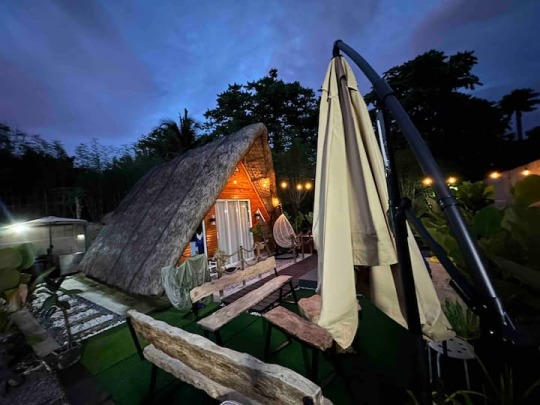



The first thing I decided to do in the Philippines is visit Fort Santiago. Built by Spaniards in 1571, Fort Santiago has a perimeter of 2,030 feet and is located along the Pasig River in Manilla. The entrance fee is ₱ 75 ($1.30). Spain ruled over the Philippines from 1565 to 1821. Spain brought over their laws, literature, and religion into the Philippines, but Filipino people have been able to build up their own culture since Spain left. 79.5% of people in the Philippines are Roman Catholic, and another 9% belong to other branches of Christianity. This is one thing that had stayed from Spain's control.

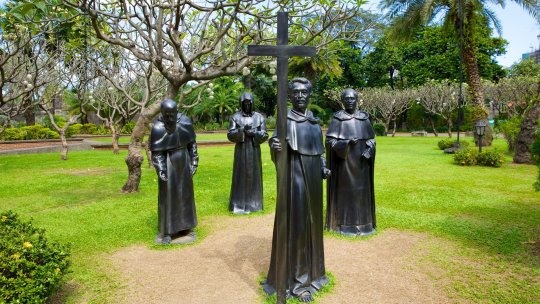


After visiting Fort Santiago, I went to Manila Ocean Park. Admissions into the park are ₱ 680 ($11.77) and that gives you access to the entire place. Manila Ocean Park has many special events you can watch, they have an all star bird show, a sea lion show, and a penguin feeding. All of their events are at the same time, so you have to pick just one you would like to go to. I chose to do the penguin feeding because it seems the most fun.
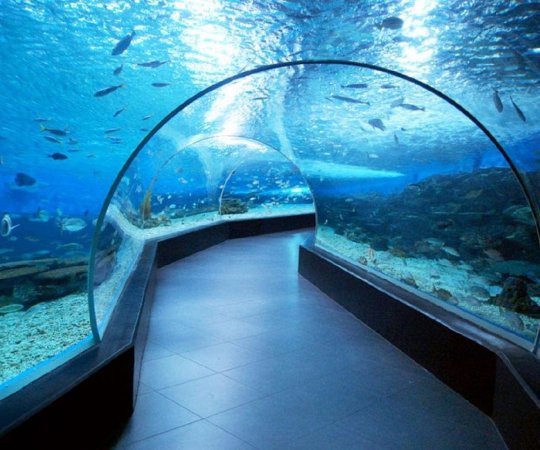


After ocean park, I decided to get something to eat. I got the unofficial national dish of the Philippines, adobo. Adobo is marinated meat, garlic, soy sauce, black pepper, and bay leaves on top of rice. People usually use chicken or pork for their adobo, but you can also get squid, fish, or vegetables. Adobo is a dish that comes from Portugal and Spain. I wanted to try the national drink of the Philippines to wash down my meal, but their national drink is San Miguel Beer, meaning I could not drink it. The legal drinking age in the Philippines is 18, but I am only 17. After my meal, I wanted to get dessert. The unofficial national dessert of the Philippines is halo-halo. Halo-halo is layers of shaved ice and condensed milk. It is like ice cream, meaning you can get it in many flavors. Halo-halo translates to “mix-mix” in Tagalog, a variety of Filipino dialect.


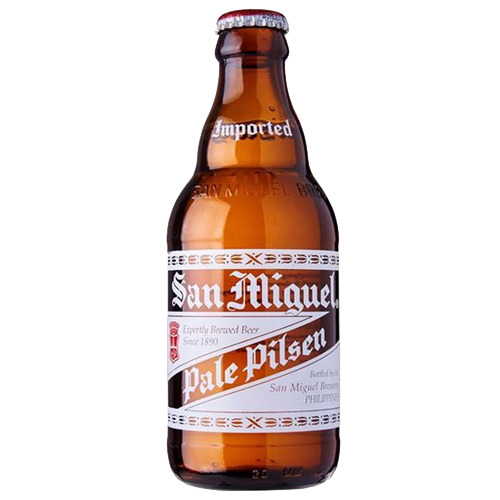
DAY TWO
Today I was leaving the Philippines after my very short visit. Even though I only stayed one day here, I feel as if I learned a ton about the history of the Philippines and what to expect when I travel here again in the future. I did enjoy the activities I went on, and the food was amazing. I liked the food more than the food in Mongolia.
0 notes
Text
Dwarf Hamster & 4 Things You Should Know!
Dwarf hamsters are cute little animals that are great to have as pets. They are smaller than regular hamsters and have special features that make them stand out. This article will tell you everything you need to know about dwarf hamsters, including how they look, where they live, how they act, how long they live, how they breed, and how they have babies.
We will also talk about how to take good care of them, common health problems they might have, and some fun facts about these small pets.
Tell about the Dwarf Hamster.
What's a Dwarf Hamster?
Dwarf hamsters are small rodents that live in Asia. They are from the genus Phodopus and come from places like Siberia, Mongolia, and China. They are popular as pets because they are small and look cute.
The Campbell's dwarf hamster, the Winter white dwarf hamster, the Roborovski dwarf hamster, and the Chinese dwarf hamster are all types of dwarf hamsters.
Things about the body
Depending on the species, dwarf hamsters are usually between 2 and 4 inches long and weigh between 0.5 and 1.5 ounces. Their bodies are round, and their legs and tails are short. Dwarf hamsters have large cheek pouches that they use to store food. This is one thing that makes them stand out.
Home and natural surroundings
Dwarf hamsters live in burrows in grasslands and semi-desert areas when they are in the wild. These burrows keep them safe from predators and give them a place to stay when the weather is bad. Dwarf hamsters are good at digging, and inside their burrows, they make complex networks of tunnels.
Characteristics of behavior
Most of the time, dwarf hamsters are nocturnal, which means they are most active at night. They have great hearing and a good sense of smell, which helps them find their way around. These small rodents are known for how agile they are and how fast they can move, which makes them fun to watch.
How Big Is a Dwarf Hamster?
As was already said, the size of a dwarf hamster depends on the species. Campbell's dwarf hamsters and Winter white dwarf hamsters are a little bit bigger than Roborovski dwarf hamsters, which are about 2 inches long.
Lifespan of a dwarf hamster
Dwarf hamsters live between 1.5 and 3 years on average. But some people have been known to live up to 4 years with good care and a healthy diet. Their lifespan may depend on their genes, their environment, and how healthy they are overall.
How to breed and have babies with dwarf hamsters
Dwarf hamsters can have babies when they are 5 to 7 weeks old. When males and females reach sexual maturity, it's important to keep them apart so they don't have babies they don't want.
Dwarf hamsters are pregnant for about 18 to 21 days, after which the female gives birth to a cute litter of baby hamsters. These tiny babies are born with no hair and can't see, but they grow quickly in the first few weeks.
Look after the dwarf hamster.
Most Common Health Problems
Even though dwarf hamsters are usually healthy animals, they can still get sick. Some common health problems are respiratory infections, wet tail (a bacterial infection), dental problems, and being overweight. It is very important to keep a close eye on your hamster's health and take it to the vet if you see any signs of illness.
Choosing the Right Size Cage and Bedding
When choosing a cage for your dwarf hamster, make sure it gives them enough room to move around and play. To keep animals from getting out, it's best to use wire cages with close-set bars. Don't use cages with plastic parts because hamsters might chew on them and then eat the plastic, which could be bad for their health.
For bedding, choose something safe and absorbent, like aspen shavings or paper-based bedding, to make a clean and comfortable space.
Diet and feeding schedule that are right
A well-balanced diet is important for your dwarf hamster's health as a whole. Their main food should be high-quality hamster pellets or lab blocks. They should also get fresh fruits, vegetables, and treats from time to time.
Don't give them foods that are high in sugar or fat, because they can make them fat and cause other health problems. A sipper bottle filled with fresh water should always be attached to the cage.
Playing and working out regularly
Dwarf hamsters are naturally active animals that need to run around and think about things. Give them a hamster ball or an exercise wheel so they can use up their extra energy.
You can also let your hamster explore a safe, enclosed area outside of its cage while you keep a close eye on it. Remember to get rid of any possible dangers and make sure there is no way out.
Most Common Health Problems
Signs of being sick
It is important to know the signs that your dwarf hamster might be sick. Changes in appetite, weight loss, tiredness, slouching, unusual discharge from the eyes or nose, diarrhea, excessive itching or scratching, and trouble breathing are some of these signs. If you see any of these signs, you need to get your pet to a vet right away.
Preventive Actions
There are several preventive steps you can take to keep your dwarf hamster healthy. Make sure their cage is clean and free of waste to keep bacteria from getting in. Give them a healthy, well-balanced diet to help their immune system.
Avoid sudden changes in temperature and keep their environment between 65 and 75°F (18 and 24°C) for comfort. Handle and talk to your hamster often to keep an eye on their behavior and catch any changes early.
Choices for treatments
If your dwarf hamster gets sick, you need to see a veterinarian who knows how to take care of small animals. They will be able to figure out what's wrong and suggest the best way to treat it. Depending on the condition, antibiotics, anti-inflammatory drugs, and care to help the person feel better may be prescribed.
Dwarf Hamster: Interesting Facts
Things that are different
Dwarf hamsters are interesting pets because they have some unique traits. One interesting thing about them is that they can store food in pouches in their cheeks. This lets them gather and move food quickly. These pouches can get almost as big as their heads when they grow.
Interesting Things People Do
There are many interesting things that dwarf hamsters do. They like to dig holes, and they will spend hours digging tunnels and making complex underground systems. They also like to climb, run on exercise wheels, and play with toys in a way that involves both of them.
Strange Habits
Dwarf hamsters tend to save food, which is an odd thing for them to do. They will pick up any extra food and put it in different parts of their enclosure, just like they would do in the wild. This is how they make sure they have food when there isn't much around.
What kinds of dwarf hamsters are there?
There are many different kinds of dwarf hamsters, and each has its own unique traits. Campbell's dwarf hamster, which is also called the Russian dwarf hamster, is one of the most common. Its coat can be gray, brown, or white, among other colors.
Winter white dwarf hamsters, which are also called Djungarian hamsters, can change the color of their fur depending on the season. In the winter, their fur turns white. Roborovski dwarf hamsters are the smallest and fastest of the dwarf hamster species. They are known for moving quickly and having fur that looks like sand. Compared to other dwarf hamsters, Chinese dwarf hamsters have a slimmer body and a longer tail.
Pet Dwarf Hamsters
Both kids and adults love having dwarf hamsters as pets. They don't need much care and are easy to handle once they're used to being around people. But it's important to remember that they are small and fragile creatures that need to be handled with care and watched over, especially when children are around.
How They Get Along with Other Pets and People
Dwarf hamsters like to be with people, but they are mostly solitary animals and should be kept by themselves to avoid fights or injuries.
If you have other pets like cats or dogs, make sure they can't get into the hamster's cage because they might see it as food. Always watch how your hamster interacts with other pets to make sure everyone stays safe.
How to train and take care of a dwarf hamster
Positive reinforcement can be used to train dwarf hamsters to some extent. You can teach them easy tricks like coming to you when you hold out treats or doing what you say. But you have to be patient and consistent because each hamster is different and learns at its own pace.
Differences in the sexes of dwarf hamsters
Male and female dwarf hamsters look different, which makes it easy to tell which is which. Males' rear ends are usually bigger and rounder, while females' rear ends are smaller and more pointed. Also, males have scent glands on their flanks that they use to mark their territory.

Dwarf hamsters come in different types and colors.
There are many different colors and patterns of fur on dwarf hamsters, which adds to their appeal as pets. Dwarf hamsters' coats can be solid colors like black, white, or gray, or they can have patterns like spots, stripes, or even banded fur. This depends on the species and the individual's genes.
How the Dwarf Hamster is Different from Other Hamster Breeds
Even though dwarf hamsters and other types of hamsters have some things in common, like liking to burrow and being active at night, they are also very different.
Dwarf hamsters tend to be smaller than Syrian hamsters, which are the largest breed of hamster. They also need different kinds of care and act in different ways, which makes them each unique.
Conclusion
Dwarf hamsters are interesting pets that bring their owners a lot of joy and fun. You can make sure your dwarf hamster has a happy and healthy life by knowing what makes them unique, giving them the right care, and being aware of any possible health problems. Don't forget to give them a good place to live, a balanced diet, regular exercise, and mental challenges. Check on their health and take them to the vet when they need it.
Dwarf hamsters do and act in interesting ways that make them fun to watch. From the pouches in their cheeks to their tendency to burrow and save food, they do interesting things that show off their natural instincts. With the right care and training, you and your dwarf hamster can become very close.
It's important to remember that each species of dwarf hamster has its own needs and traits, so it's important to do research on the species you want to keep as a pet and learn what it needs. No matter if you choose a Campbell's dwarf hamster, a Winter white dwarf hamster, a Roborovski dwarf hamster, or a Chinese dwarf hamster, it's important to give them a loving and caring home.
In conclusion, dwarf hamsters make great pets that bring happiness and company to many homes. By knowing what makes them unique, giving them the care they need, and appreciating their habits, you can create a rewarding and enriching experience for both you and your small furry friend.
0 notes
Text
BEIJING (AP) — Employers in Beijing were ordered Thursday by the government to stop outdoor work after scorching summer heat in the Chinese capital was forecast to reach 40 degrees centigrade (104 Fahrenheit).
Government departments were ordered to ensure the elderly and ill could stay cool after the city of 22 million people issued a “red alert,” the highest level of a warning system for extreme temperatures.
The government reported on Monday that Beijing recorded 10 days of temperatures above 35 C (95 F), the longest streak of its kind since 1961.
“Relevant departments and units shall take emergency measures for heatstroke prevention and cooling,” said a city government notice. It told employers to “stop outdoor operations.”
At the same time, flooding has forced thousands of people to flee their homes in southern China.
The government on Wednesday issued an alert for possible flash flooding in Inner Mongolia in the north, Heilongjiang in the northeast and Tibet and Sichuan in the southwest.
People are enduring torrid temperatures across much of the globe. The Earth’s average temperature remained at a record high Wednesday, after two days in which the planet reached unofficial records. It’s the latest marker in a series of climate-change-driven extremes.
1 note
·
View note